
Mumbai, India has centuries of history and many sites of tourist interest.[1]
Archaeological sites[edit]
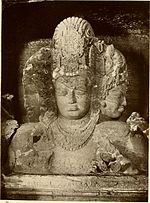
Caves[edit]
Forts[edit]


- Bassein Fort
- Belapur Fort
- Bombay Castle
- Castella de Aguada
- Dongri Fort
- Fort George, Bombay
- Ghodbunder Fort
- Madh Fort
- Mahim Fort
- Mazagon Fort
- Riwa Fort
- Sewri Fort
- Sion Hillock Fort
- Vasai Fort
- Worli Fort
Others[edit]
Museums[edit]

- Antarang – Sex Health Information Art Gallery
- Chhatrapati Shivaji Maharaj Vastu Sangrahalaya
- Cowasji Jehangir Hall
- Dr. Bhau Daji Lad Museum
- Mani Bhavan
- National Gallery of Modern Art
- National Museum of Indian Cinema
- Nehru Science Centre
Beaches[edit]


Ecotourist sites[edit]
Protected areas and others[edit]
- Karnala Bird Sanctuary
- Panje-Dongri wetlands
- Sanjay Gandhi National Park
- Thane Creek Flamingo Sanctuary
- Turtle Mass Nesting Site, Versova Beach
Dams and lakes[edit]
Amusement parks, gardens and grounds[edit]
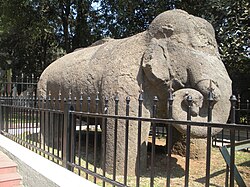
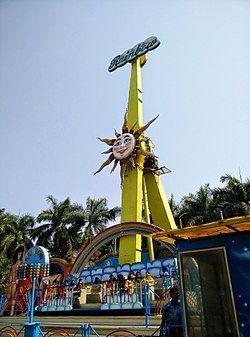

- Adlabs Imagica
- Andheri Sports Complex
- B.P.T. Ground
- Bandra Kurla Complex Ground
- Brabourne Stadium
- Colaba Woods
- Cooperage Ground
- Cross Maidan
- Dadaji Kondadev Stadium
- DY Patil Stadium
- EsselWorld
- Gilbert Hill
- Gowalia Tank
- Hanging Gardens of Mumbai
- Horniman Circle Gardens
- Jijamata Udyaan
- Jogger's Park
- Joseph Baptista Gardens
- Kamala Nehru Park
- Mahalaxmi Racecourse
- Mahindra Hockey Stadium
- Middle Income Group Club Ground
- Oval Maidan
- Sardar Vallabhbhai Patel Indoor Stadium
- Shivaji Park
- Wankhede Stadium
Cinemas and film studios[edit]
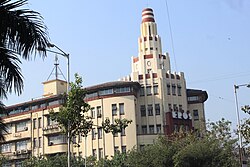
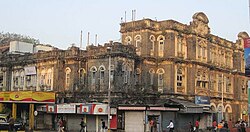
- Annapurna Studios
- Bombay Talkies
- Capitol Cinema
- Coronation Cinema
- Dadasaheb Phalke Chitranagari
- Eros Cinema
- Filmistan
- Kamalistan Studios
- Liberty Cinema
- Maratha Mandir
- Mehboob Studio
- Metro Big Cinemas
- New Empire Cinema
- Plaza cinema
- R. K. Studio
- Rajkamal Kalamandir
- Ranjit Studios
- Regal Cinema
- Royal Opera House
- Sterling Cineplex
- Wadia Movietone
Malls and markets[edit]
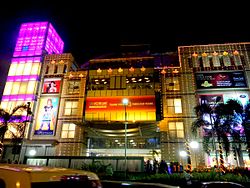


- Chor Bazaar
- Colaba Causeway
- Crawford Market
- Crossroads Mall
- Dava Bazaar
- Dharavi
- Fashion Street
- Hill Road
- Zaveri Bazaar
- High Street Phoenix
- Phoenix Marketcity
- Inorbit Mall, Malad
- Inorbit Mall, Vashi
- Infinity Mall, Andheri
- Infiniti Mall, Malad
- Lamington Road
- Linking Road
- Lohar Chawl
- Mahatma Jyotiba Phule Mandai
- Metro Junction Mall
- Princess Street
- R City Mall
- R-Mall
- Raghuleela Mall, Vashi
- Raghuleela Mega Mall
- Viviana Mall
Places of worship[edit]






Churches[edit]
- Afghan Church
- Cathedral of the Holy Name
- Church of Our Lady of Dolours, Wadala
- Church of Our Lady of Good Counsel & Shrine of St. Anthony, Sion
- Church of Our Lady of Health, Cavel
- Church of Our Lady of Mount Carmel, Bandra
- Gloria Church
- Holy Cross Church, Kurla
- Mount Mary Church, Bandra
- Our Lady of Egypt Church
- Our Lady of Immaculate Conception Church, Mt. Poinsur
- Portuguese Church
- Sacred Heart Church, Santacruz
- St. Andrew's Church
- St. John the Baptist Church
- St. Joseph's Church, Juhu
- St. Michael's Church
- St. Thomas Cathedral
Hindu temples[edit]
- Babulnath
- Jivdani Mata
- Jogeshwari Caves
- Kadeshwari Devi Temple
- Lalbaugcha Raja
- Mahalakshmi Temple
- Mumba Devi Temple
- Shaneshwar Sansthan
- Shreebalajimandir
- Shri Swaminarayan Mandir
- Siddhivinayak Temple
- Wagheshwari Temple
- Walkeshwar Temple
Masjid or shrines[edit]
Synagogues[edit]
Others[edit]
References[edit]
- ^ "MAHARASHTRA TOURISM, The Official Website of Maharashtra Tourism Development Corporation Ltd". maharashtratourism.gov.in. Retrieved 1 February 2014.






Well, that’s interesting to know that Psilotum nudum are known as whisk ferns. Psilotum nudum is the commoner species of the two. While the P. flaccidum is a rare species and is found in the tropical islands. Both the species are usually epiphytic in habit and grow upon tree ferns. These species may also be terrestrial and grow in humus or in the crevices of the rocks.
View the detailed Guide of Psilotum nudum: Detailed Study Of Psilotum Nudum (Whisk Fern), Classification, Anatomy, Reproduction